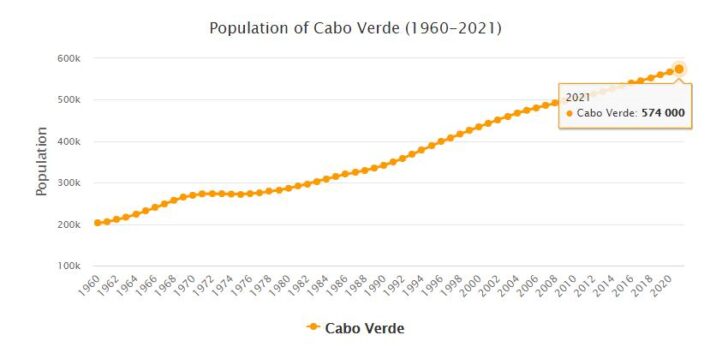Yearbook 2012
Cape Verde. On July 1, local elections were held in Cape Verde’s 22 municipalities. The opposition party The Movement for Democracy (MPD) was clearly victorious and gained control of 13 municipalities, an increase with one municipality compared to before. The governing Cape Verde’s African Independence Party (PAICV) received reduced support, from ten to eight municipalities. In one municipality, an independent candidate, supported by MPD, won. Assessors felt that the government’s poor election results could hurt Prime Minister José Maria Neves’ reputation.
- AbbreviationFinder.org: Provides most commonly used acronyms and abbreviations for Cape Verde. Also includes location map, major cities, and country overview.
Country data
Area: 4033 km2 (world rank: 167)
Population: 546,000
Population density: 135 per km2 (as of 2017, world rank: 167)
Capital: Praia
Official languages: Portuguese
Gross domestic product: 1.8 billion US $; Real growth: 3.9%
Gross national product (GNP, per resident and year): 2990 US$
Currency: 1 Cabo-Verde-Escudo (CEsc) = 100 Centavos
Embassy
Stavangerstr. 16, 10439 Berlin
Telephone 030 20450955,
Fax 030 20450966
www.embassy-capeverde.de
Government
Head of State: Jorge Carlos Fonseca, Head of Government: José Ulisses de Pina Correia e Silva, Exterior: Luís Filipe Tavares
National holiday: 5.7.
Administrative structure
22 districts
State and form of government
Constitution of 1992
Republic
Parliament: National Assembly (Assembléia Nacional) with 72 members, election every 5 years
Direct election of the head of state every 5 years
Suffrage from 18 years of age
Population
last census 2010: 491,875 residents 71% African-European, 28% African descent; approx. 700,000 abroad, mainly in the USA, Portugal, the Netherlands
Cities (with population): (as of 2010) Praia (Santiago) 127,832 inh., Mindelo (São Vicente) 70,468, Santa Maria (Sal) 23,839
Religions: 77% Catholics, 10 % Protestants, 2% Muslims and others (as of 2006)
Languages: Portuguese, Portuguese Creole
Employed by economic sector: Agriculture. 68%, industry 7%, business 25% (2017)
Unemployment (in% of all labor force): 2017: 10.3%
Inflation rate (in%): 2017: 0.8%
Foreign trade: import: 739 million US $ (2017); Export: 65 million US $ (2017)
Climate
The islands are in the area of influence of the northeast trade winds. The rainy season is from July to November. The precipitation reaches approx. 1,000 mm per year in the mountains and approx. 200 mm in the coastal area. In Praia, the annual average temperature is 24.8 ° C and the relative humidity is 60%.
Population 2012
According to countryaah, the population of Cape Verde in 2012 was 524,632, ranking number 172 in the world. The population growth rate was 1.270% yearly, and the population density was 130.2092 people per km2.
